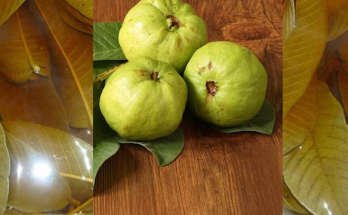Blossom end rot can be a frustrating problem for gardeners, often affecting one plant while sparing another. This common tomato disorder manifests as dark, sunken spots on the blossom end of the fruit. The primary cause is a deficiency of calcium in the developing fruit. However, even if you’re diligent about adding calcium to your soil, it’s crucial to ensure it’s available in a form that your plants can readily absorb. Here’s a guide to six powerful supplements to prevent blossom end rot and keep your tomatoes healthy.
Understanding Blossom End Rot
Blossom end rot is primarily caused by a lack of calcium in the soil. While calcium might be present, it often isn’t in a form that plants can use. Common sources like wood ash and eggshells contain calcium carbonate, which doesn’t dissolve in water, making it less accessible to plants. The key is to convert calcium carbonate into a form plants can absorb easily, such as calcium acetate.
Effective Calcium Supplements for Your Garden
1. Wood Ash and Vinegar Solution
Wood ash is a rich source of calcium carbonate. To make the calcium in wood ash more available to your plants, you need to convert it to calcium acetate using vinegar.
- Ingredients:
- 1 cup of wood ash
- 1 cup of 9% table vinegar
- 10 liters of water
- 1 teaspoon of cinnamon
- 2 glycine tablets
- Instructions:
- Mix the wood ash and vinegar. The reaction will create bubbles.
- Once the bubbling stops, dilute the mixture with 10 liters of water.
- Add 1 teaspoon of cinnamon to help prevent fungal diseases.
- Crush and add 2 glycine tablets. Amino acids in glycine help plants absorb nutrients more effectively.
2. Dolomite Lime and Vinegar Solution
Dolomite lime is another excellent source of calcium carbonate.
- Ingredients:
- 1 cup of dolomite lime
- 1 cup of 9% table vinegar
- 10 liters of water
- 2 tablespoons of potassium humate
- Instructions:
- Mix the lime and vinegar until it stops bubbling.
- Dilute the mixture with 10 liters of water.
- Add 2 tablespoons of potassium humate to enhance soil fertility and nutrient uptake.
3. Eggshell and Vinegar Solution
Eggshells are a great way to recycle kitchen waste into garden nutrients.
- Ingredients:
- 1 cup of crushed eggshells
- 1 cup of 9% table vinegar
- 10 liters of water
- 1 tablespoon of any available humate
- Instructions:
- Combine the crushed eggshells with vinegar.
- Wait until the reaction ceases, then mix with 10 liters of water.
- Add 1 tablespoon of humate to the solution.
Foliar Calcium Supplements
4. Calcium Gluconate Spray
Calcium gluconate tablets can be used to create an effective foliar spray.
- Ingredients:
- 2 calcium gluconate tablets
- 1 liter of water
- 2 glycine tablets
- Instructions:
- Dissolve the calcium gluconate tablets in 1 liter of water.
- Crush and add 2 glycine tablets for enhanced absorption.
- Spray the mixture directly onto the leaves.
5. Avoiding Chloride Compounds
While calcium chloride was previously recommended, it is less effective and can inhibit plant growth. It’s best to avoid supplements containing chlorides and opt for those that promote plant health without adverse effects.
Natural and Proven Methods
6. Using Natural Humates
Incorporating natural humates into your soil can significantly improve nutrient uptake. Humates are organic compounds that enhance the soil’s capacity to retain and supply nutrients.
- Application:
- Add 1 tablespoon of humate per 10 liters of water to your watering routine.
- Use regularly to maintain high soil fertility and improve plant health.
Final Tips
- Routine Maintenance: If you’ve noticed blossom end rot on any of your tomatoes, remove the affected fruits immediately to prevent the spread and encourage the plant to redirect its energy to healthy growth.
- Consistent Application: Regularly apply these calcium solutions, especially during the fruiting stage, to ensure continuous availability of nutrients.
Incorporating these nutrient solutions into your gardening routine can significantly reduce the occurrence of blossom end rot, leading to healthier and more productive tomato plants. Happy gardening!




I don’t think the title of your article matches the content lol. Just kidding, mainly because I had some doubts after reading the article. https://accounts.binance.com/fr-AF/register-person?ref=JHQQKNKN